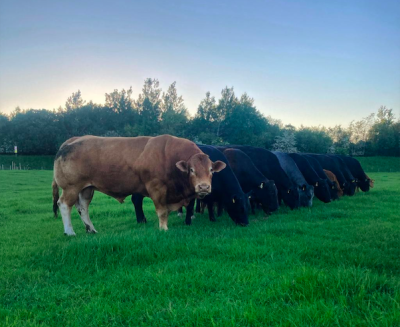
By Large Animal Vet Shona Mouncey
Ensuring that bulls are going to be fit for their purpose should be an essential task for any farms which rely on them.
Although calving may not yet be over, thinking ahead to the next breeding season and being prepared could really pay off when it comes to increasing the number of calves born and having a tight calving block.
To ensure bulls are fertile, a breeding soundness exam should be carried out 6-8 weeks before the start of the breeding season. Approximately 20% of bulls are found to be sub-fertile. This can result in more barren cows and a longer calving period, which increases the disease challenge to calves and extends the period of time increased labour is required for during calving.

For starters, bulls must be physically fit to work. The physical exam checks for lameness, body condition score and any signs of disease. The testicles are examined and the scrotal circumference is measured, for which there are minimal requirements that need to be met which vary depending on the age of bull.
If the bull passes the physical exam, a semen sample will be collected. This will be examined under the microscope to check concentration and progressive motility. At least 60% must be alive and swimming in a straight line to pass. A stained sample will then be examined back at the practice to check morphology which detects physical abnormalities of the sperm. At least 70% must be normal in order to pass.
Bulls which pass all these parameters will be classed as satisfactory potential breeders and hopefully give confidence in their potential breeding success. Bull breeding exams can be carried out on the majority of farms as all that is needed is a suitable crush and a power supply for the microscope.